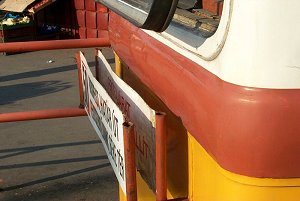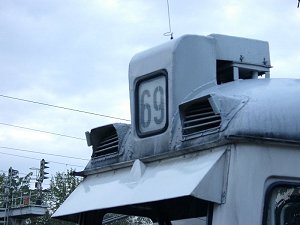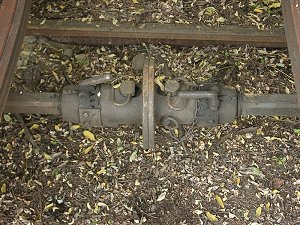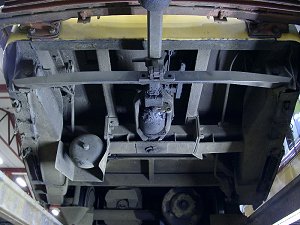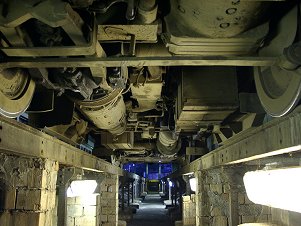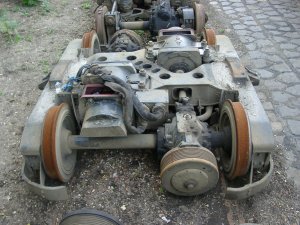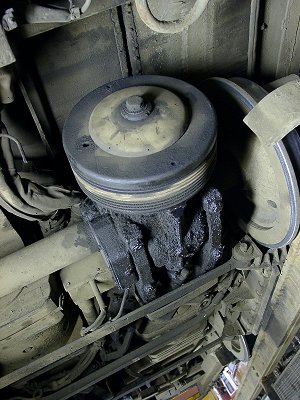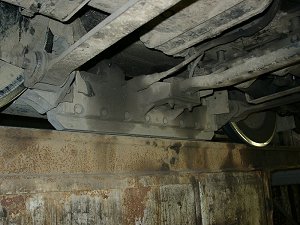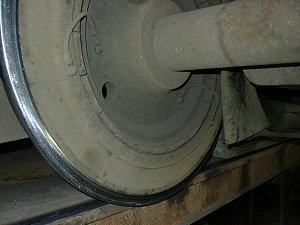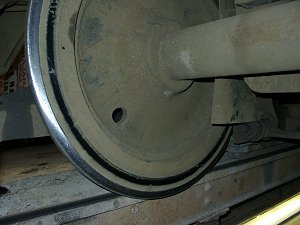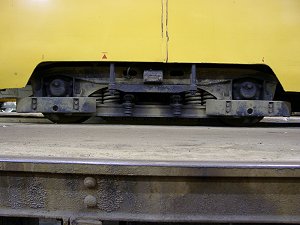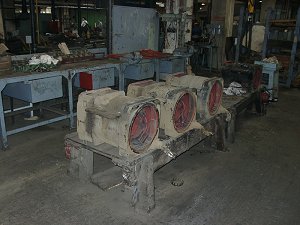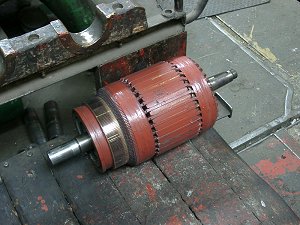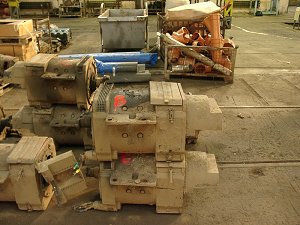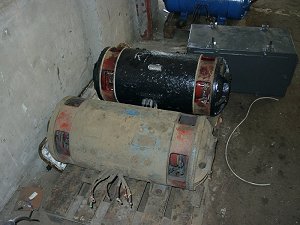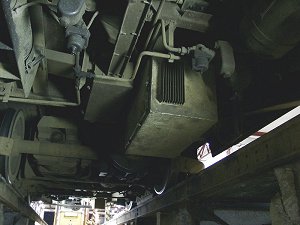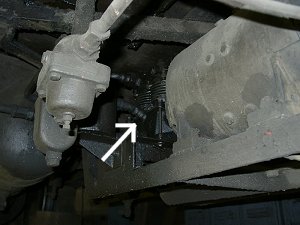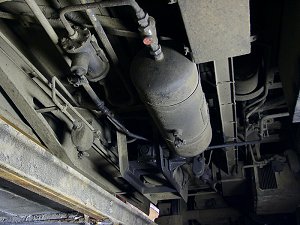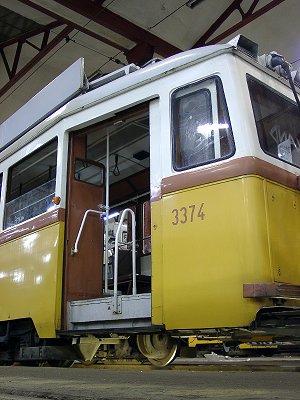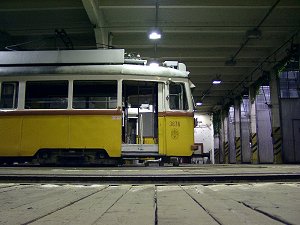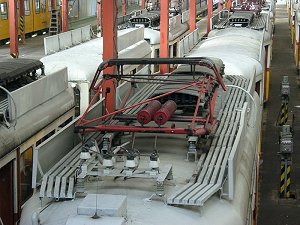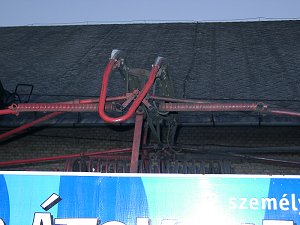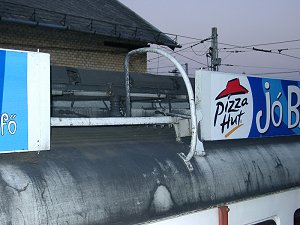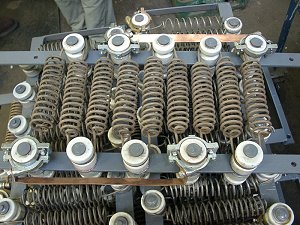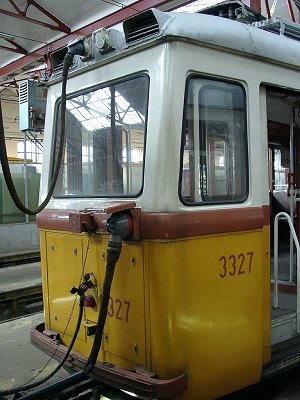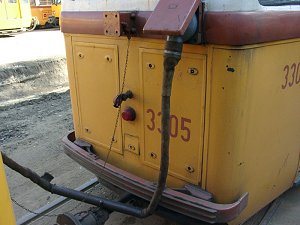budapest
other hungarian
close-up
lost rails
other countries
Let's continue with the front of the cars. Originally all cars of the 3200-, 3300- and 3400-series had driver's cabs on both ends, now there's only one left, and the other end was simplified. Characteristic for the front is the sun-blinds over the windshield, and the fact that the windshield can be opened forward to let in some fresh air.
Two destination plates can be placed underneath the windshield. The first is normally used to display the route's destination, the one behind it is used for depot rides, or displays a sign that the car does not carry any passengers (due to technical faults or a test ride).
The route number plate sits on top of the car, and can be changed from inside the driver's cab. The two vents on its two sides lead into the ventillation shaft that runs through the roof of the car.
The cars are tightly coupled with Alemann-type devices. These are only used for mechanical coupling, we will deal with the electric stuff later.
The Alemann device is connected to the chassis in a damped way. On the left-hand side you can also see the warning bell.
And if we're now under the car, let's see what else is there!
One of the trucks of a UV. On the right-hand side you can see one of the motors over one of the axles, that drives the other axle via a cardan-shaft and a transmission. The other motor powers the nearest axle in the same manner from th eopposite side.
I think you can make out the truck layout here better.
In the lower left corner: the transmission housing, in the middle the cardan-shaft, in the upper right corner the motor.
There's a drum brake at the end of the transmission housing.
The magnetic track brake seen from the inside...
... and the outside, hiding behind the exterior frame of the bogie.
The rubber dumpings in the duo-block wheel disc.
Interestingly there are (or at least there were, until a few years ago) UV wheels without rubber dumping elements.
I think the truck of the UV is a quite compact masterpiece of mechanics!
UV motors, or at least the stators (the housing of the motor).
A swivel (rotating part of the motor).
Complete motors in storage.
The charging of the batteries (600V -> 24V) of the tramcar was originally done by motor-dynamoes...
... but in the last few years some of them received static converters.
The compressor for the pneumatic system, marked with a white arrow...
... and its air tank.
On this picture you can see how low the frony and rear end platforms of this tram are (for a 4-axle design with roots in the 1930's).
Of course above the tracks the floor is a bit higher.
Now, let's get back to the top of the car: behind...
... the overcurrent cutouts...
... you can see the pantograph current collector, which is actuated manually, via a rope.
The rest of the roof is occupied by the resistor fields...
... consisting of such spiral resistors.
The electric couplings are found at the back of the car. Up on the top: the coupling for the main power circuit of 600 volts and the power lead for solenoid brake of the trailer car. The 600V coupling is needed because in a coupled set only the first car has its pantograph raised, the other is fed through this cable. The thick cable in the middle is for the control circuits. The thin tube a bit lower is the pneumatic coupling for the door opener of the trailer car.
You can also recognise a thin chain between the cars.
If a unit accidentaly torns, the chain gets tense, and then pulls this lever, which immediately triggers an emergency braking.
At the end of the page: a peek at the control circuit coupling, which not only transmits driving signals, but PA, lighting and all other signals.
That's all for now :)
Pictures by Ákos Baracsy and Ákos Varga
Back to the top Back to the main page

